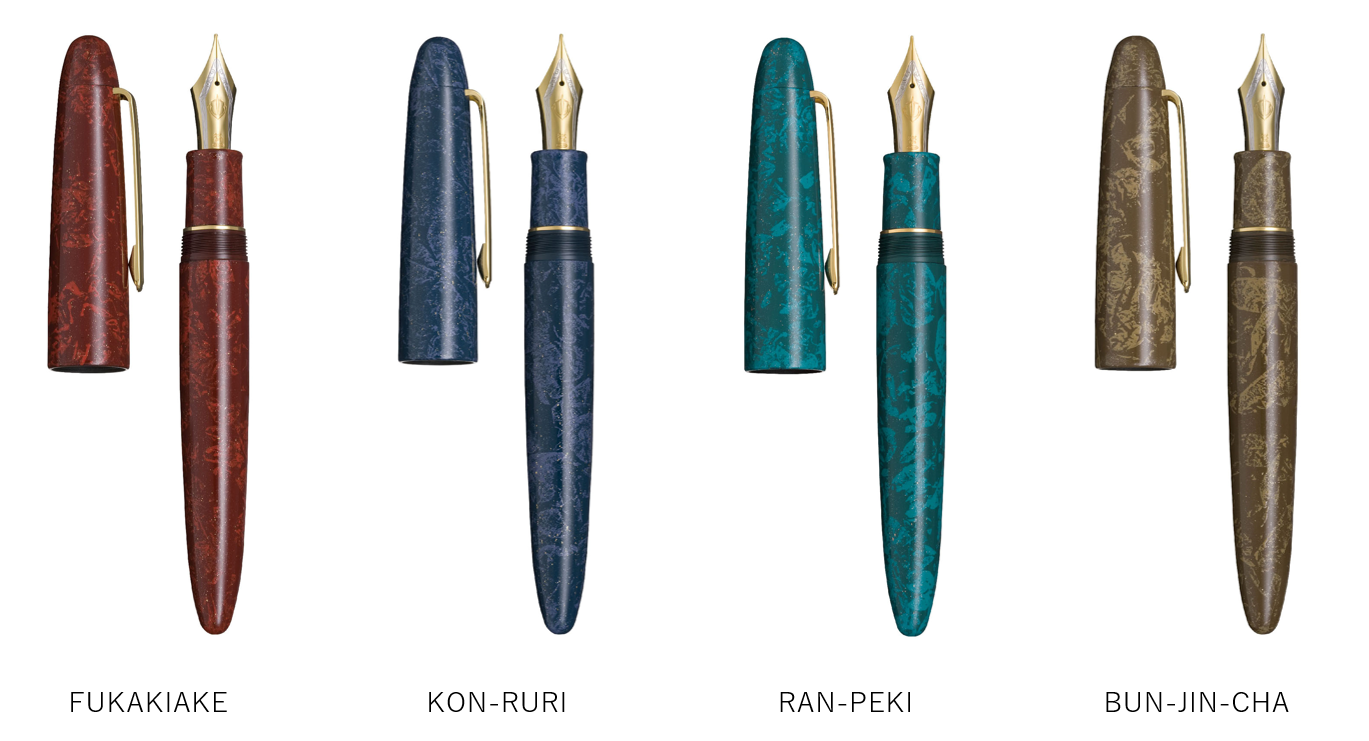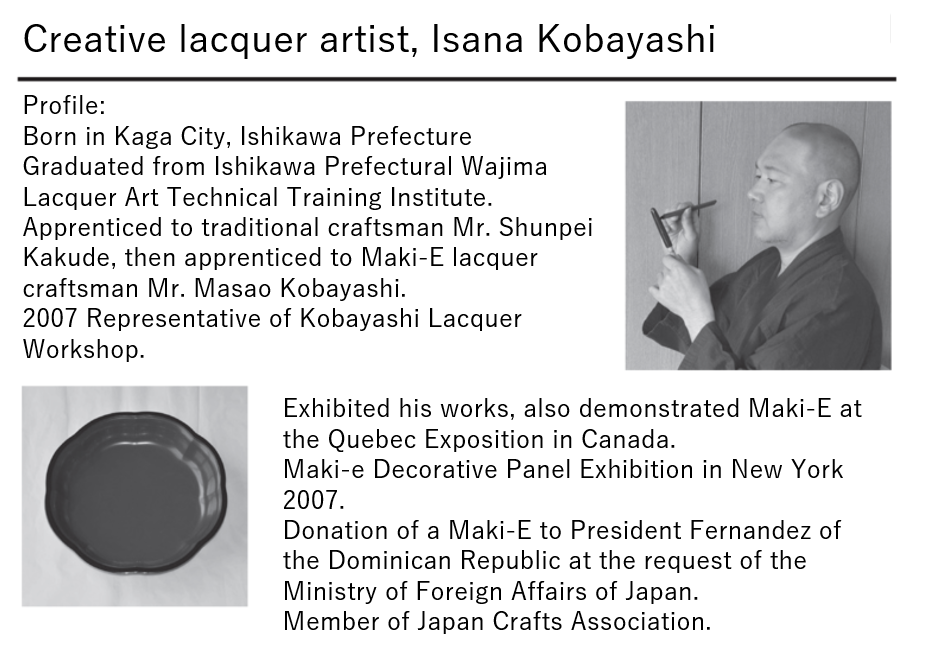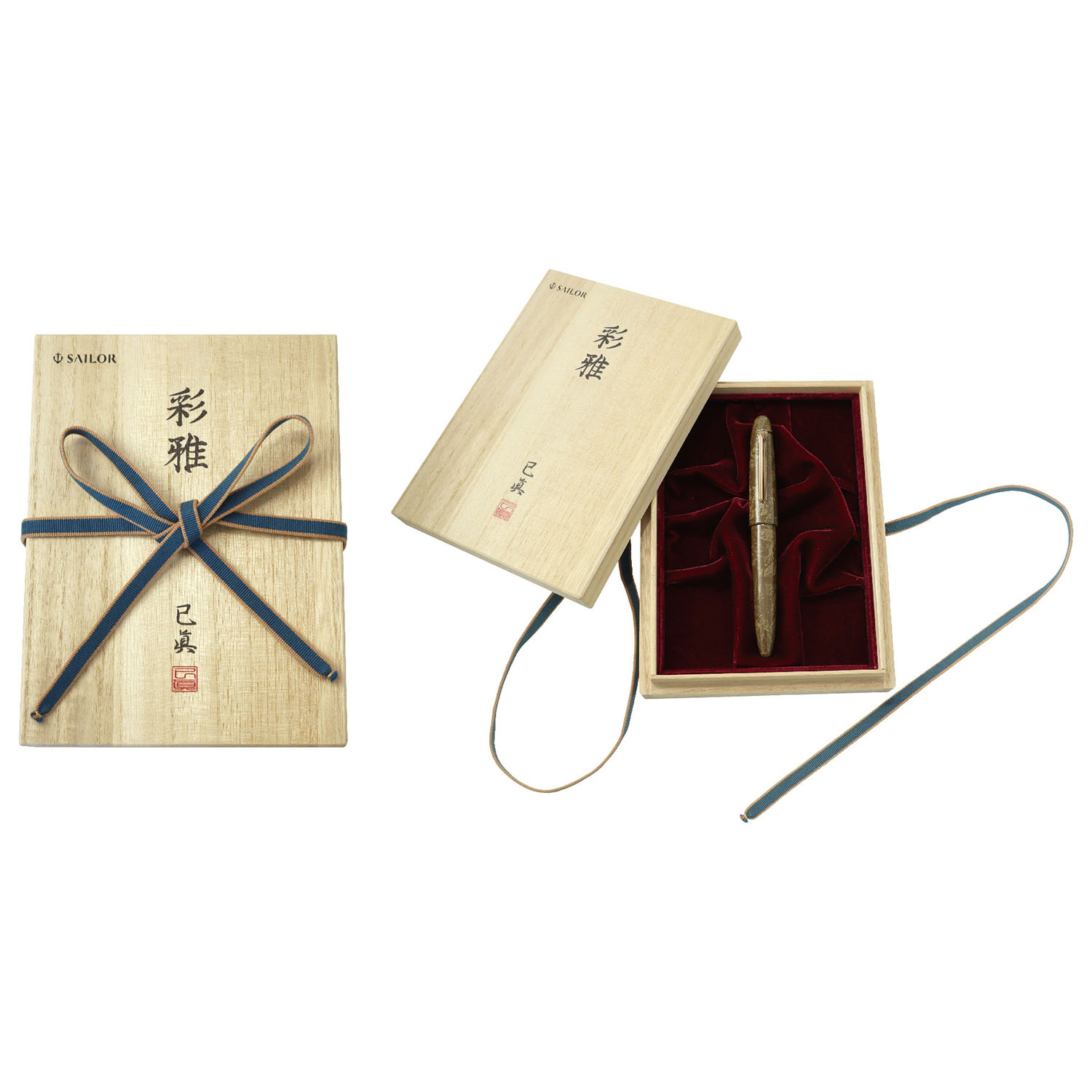Traditional Lacquer Pen “Iro-Miyabi” is a series of writing instruments that expresses the traditional Japanese “Iro” (color) and “Miyabi” (elegance) in colored lacquer.

“Seiga-nuri”, a creative Kaga-nuri lacquer.
Seiga-nuri is a new technique in which lacquer is applied with a brush, the surface is polished, and then a silk cloth is used to add layers of lacquer and patterns. The lacquer is applied to the silk cloth and stroked while slowly soaking out the lacquer to create a rich expression. The lacquer is applied to the silk cloth and stroked while slowly soaking out the lacquer to create a rich expression.
In addition, pure gold and silver powders are gently sprinkled on the surface of the lacquer to give it an elegant and refined appearance, which cannot be achieved by brush lacquering alone. After Seiga-nuri is finished, the lacquer is stored in a room for one to two months to allow it to dry properly before being assembled.

Kaga Lacquerware (Yamanaka Lacquerware)
Yamanaka lacquerware is a traditional craft born in Kaga City, Ishikawa Prefecture. Since ancient times, wooden tableware (bowls, etc.) has been the mainstay of Japanese traditional crafts for daily use. The wooden crafts of the Yamanaka area were famous and unique in Japan.
During the Edo period (1603-1867), lacquer crafts were produced in the Yamanaka area, and the lacquer and Maki-E were applied to wooden objects, giving rise to Yamanaka-nuri, also known in recent years as Kaga-nuri.
Among the many lacquer production areas in Japan, Yamanaka-nuri has produced a great number of creative lacquerware that cannot be found in any other lacquer production area, while enhancing the robustness and elegance of the lacquerware characteristics.
Lacquer crafts require skilled craftsmanship due to the nature of lacquer, and lacquer artists are also required to have a high level of craftsmanship.

